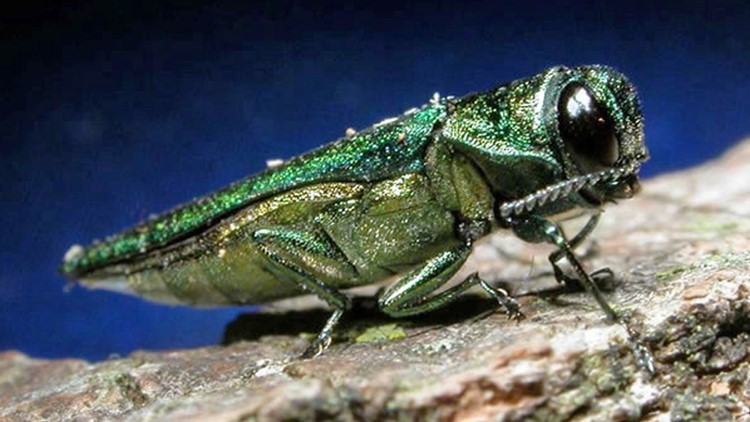AUGUSTA, Maine — The Maine Department of Agriculture, Conservation and Forestry’s (DACF) Horticulture Program and Forest Health and Monitoring Division is praising Mainers for their help in locating ash trees that may have been infested with an invasive insect, the emerald ash borer (EAB).
In October, the Department warned that 36 ash trees that may have been infested with EAB, which kill ash trees, were purchased during the spring and summer from Lowe’s stores in Auburn, Augusta, Bangor, Brewer, Brunswick, Portland, Sanford, Scarborough, Thomaston, and Windham.
Maine DACF called on Mainers to help locate the trees. On Monday, the Maine DACF said “Lowe's customers responded massively” to their call to action and helped locate 30 of the 36 ash trees.
State and federal inspectors “found no evidence of EAB infestation on these small-diameter trees,” the Maine DACF said in a release. However, they say there are still six outstanding trees which the Department says were imported into un-infested Maine towns from a nursery in Maryland where emerald ash borer is widespread.
“Every tree owner with whom we spoke recognized the risks of keeping the recently purchased ash trees," Regina Smith, Entomology Technician with the MFS, explained. The risks include:
- The potential for speeding up the introduction of EAB to their neighborhood
- A future need for pesticide treatments for as many as ten years to maintain tree health
- The possibility of violating plant quarantine laws
EAB were first detected in Michigan in 2002, and have since spread across 35 states through various wood products, including firewood and trees sold for planting. EAB was found in northern Aroostook County in May 2018, western York County in September 2018, and Cumberland County in September 2019.
These detections have led to quarantine regulations in all of York and Cumberland Counties and parts of Oxford and Aroostook Counties. Although EAB has not been detected in any new counties in 2020, DACF monitoring programs show EAB populations are expanding within already-regulated Maine areas.
Last week, the Department said there is evidence of the spread of EAB in regulated Maine areas. Infestations were confirmed in the towns of Van Buren in Aroostook County, Gorham in Cumberland County, and Ogunquit, Parsonsfield, Shapleigh, and South Berwick in York County. Targeted surveys by Maine Forest Service (MSF) staff to locate potential future biological control release sites uncovered the first detected infestation in the York County town of Newfield.
The spread of EAB in southern Maine, which is on the leading edge of the insect’s distribution, is more significant than that in the smaller infestation center in northern Maine. In both cases, DACF says the natural spread is inevitable and may be slowed using biological controls to reduce population and careful ash management.
DACF says a more significant impact on the spread can be had through targeting human-caused movement: by observing best management practices for handling ash within regulated areas, following quarantine rules, using local or heat-treated firewood, and avoiding using ash in new tree plantings.
To locate the remaining six trees, Maine DACF is continuing to ask Lowe’s customers who purchased a green ash tree this year from any of the stores in Maine or New Hampshire to report them to bugwatch@maine.gov or call (207) 287-7545, so the tree(s) can be inspected for signs of EAB even if the tree may have died. Infested trees will have to be destroyed; healthy trees will need annual re-inspection until EAB is established in the area where the tree was planted.
The Maine DACF Horticulture Program and Forest Health and Monitoring Division urge tree and shrub sellers to stop selling any Fraxinus species (white, green, black/brown ash) or Chionanthus (white fringe tree). Maine DACF suggests that homeowners not plant these species because EAB will attack trees as small as one inch in diameter. Without regular insecticide treatments, most of the ash in Maine will succumb to this invasive green beetle, the Maine DACF says.
Visit the Maine Bureau of Agriculture's Horticulture Program website for more information.



